Main menu
Common skin conditions

NEWS
Join DermNet PRO
Read more
Quick links
Author: Vanessa Ngan, Staff Writer, 2003. Updated by Hon A Prof Amanda Oakley, September 2015.
Introduction Causes Signs and symptoms Diagnosis Treatment Outlook
Jessner lymphocytic infiltrate is an uncommon skin condition that presents as non-scaly red patches and lumps on the face, neck and upper back. They are usually painless and do not itch. Lesions may go through periods of remission and exacerbation over months or years. Total spontaneous resolution has also occurred in some cases.
The condition is known by many other names including benign lymphocytic infiltration, Jessner disease, Jessner-Kanof syndrome, and benign chronic T-cell infiltrative disorder. It has been thought to be in the same disease spectrum as lupus erythematosus (lupus tumidus) but on histology, monoclonal antibody Leu 8 staining indicates they may be separate conditions.
The cause of Jessner lymphocytic infiltrate is unknown. It is classified as a benign T-cell lymphoproliferative disorder. Some cases have been associated with Borrelia infection, the cause of Lyme disease.
Cases of drug-induced Jessner lymphocytic infiltrate have been described due to duloxetine, ramipril, leflunomide, glatiramer acetate and ustekinumab.
Jessner lymphocytic infiltrate plaques usually start off as defined, small, slightly raised red spots that gradually enlarge peripherally to create a well demarcated red plaque. Sometimes the centre of the lesion is left clear, ie forming an annular and arciform shape. Single or multiple lesions may occur and they range from 2 mm to 2 cm in diameter.
Seasonal activity of Jessner lymphocytic infiltrate is variable: more patients deteriorate in winter than summer and yet flares may be associated with sun exposure. Usually, they are symptomless but some patients may complain of itching or burning.
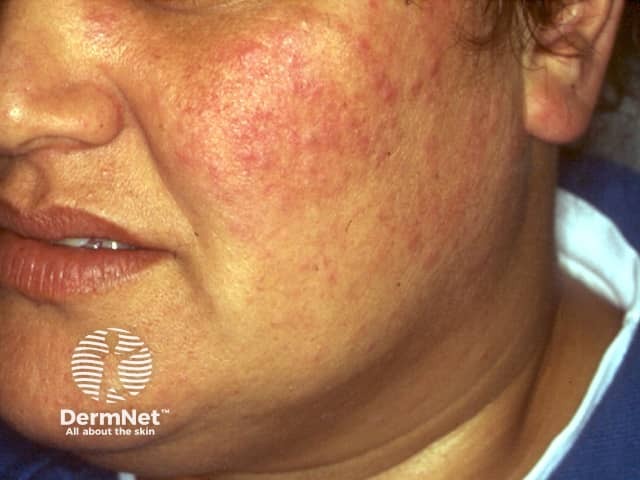
Jessner lymphocytic infiltrate
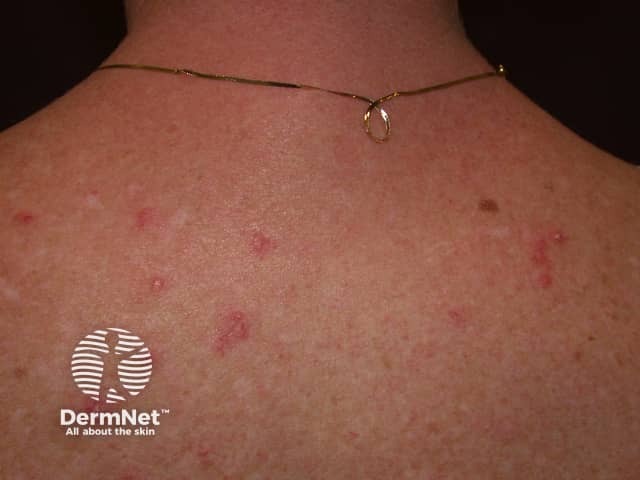
Jessner lymphocytic infiltrate
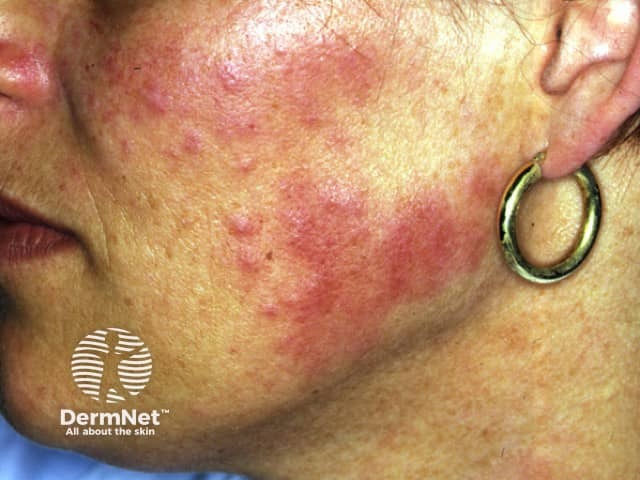
Jessner lymphocytic infiltrate
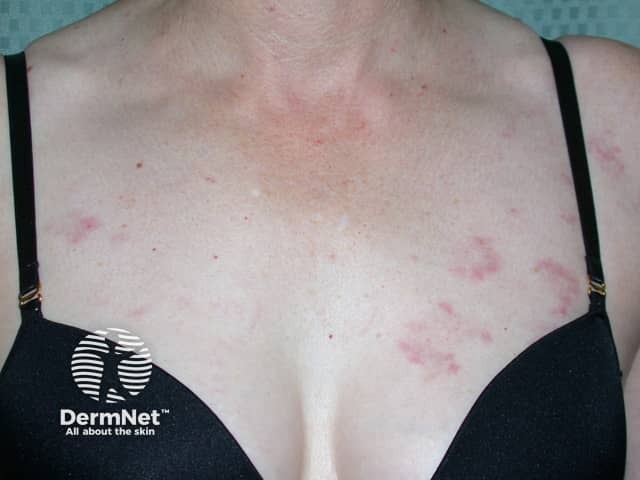
Jessner lymphocytic infiltrate
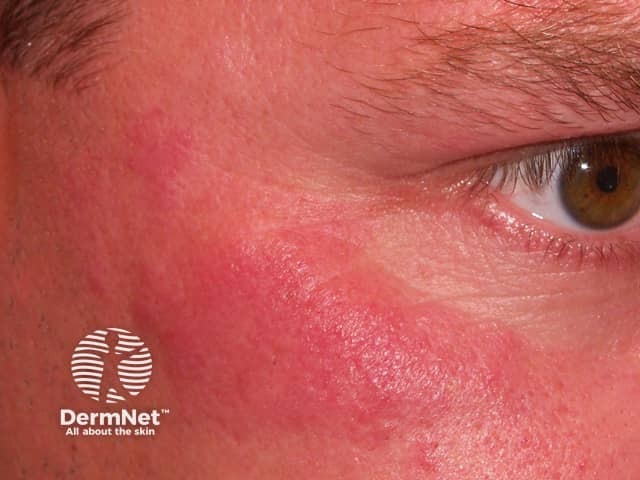
Jessner lymphocytic infiltrate
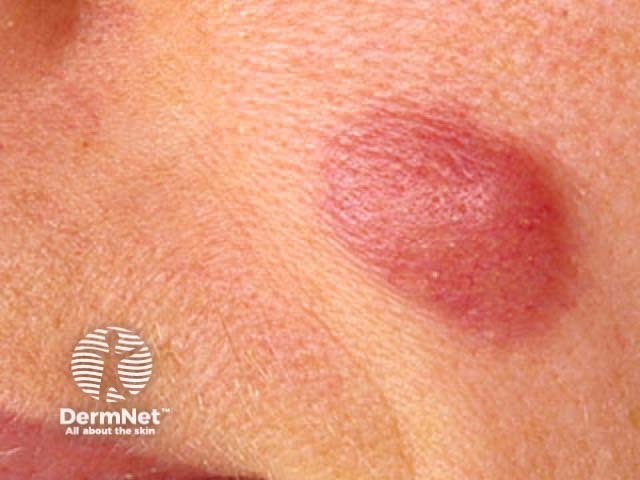
Jessner lymphocytic infiltrate
The diagnosis is made on clinical grounds and skin biopsy.
The main differential diagnoses are tumid lupus erythematosus, lymphocytoma cutis, and polymorphous light eruption.
Usually, no treatment is necessary for Jessner lymphocytic infiltrate.
Cosmetic camouflage may be used to hide lesions and improve appearance.
There is a variable response to the following treatments:
All patients should be advised to follow sun protection measures, regardless of their history of photo-aggravation.
After persisting for several months or years, lesions disappear spontaneously without leaving scars or causing other problems. Occasionally they may recur at the same site or elsewhere.